How to Stay Balanced While Casting in a Kayak
Fishing from a kayak offers anglers a unique opportunity to access waters that might otherwise be unreachable, providing an intimate connection with nature and often superior fishing opportunities. However, the combination of a narrow watercraft, moving water, and the dynamic motion of casting creates a perfect recipe for potential instability. Even experienced kayakers can find themselves taking an unexpected swim when the balance equation goes wrong during an enthusiastic cast.
This comprehensive guide will walk you through essential techniques, equipment considerations, and practical skills to help you stay upright and dry while pursuing your passion for kayak fishing.
Understanding Kayak Stability Fundamentals
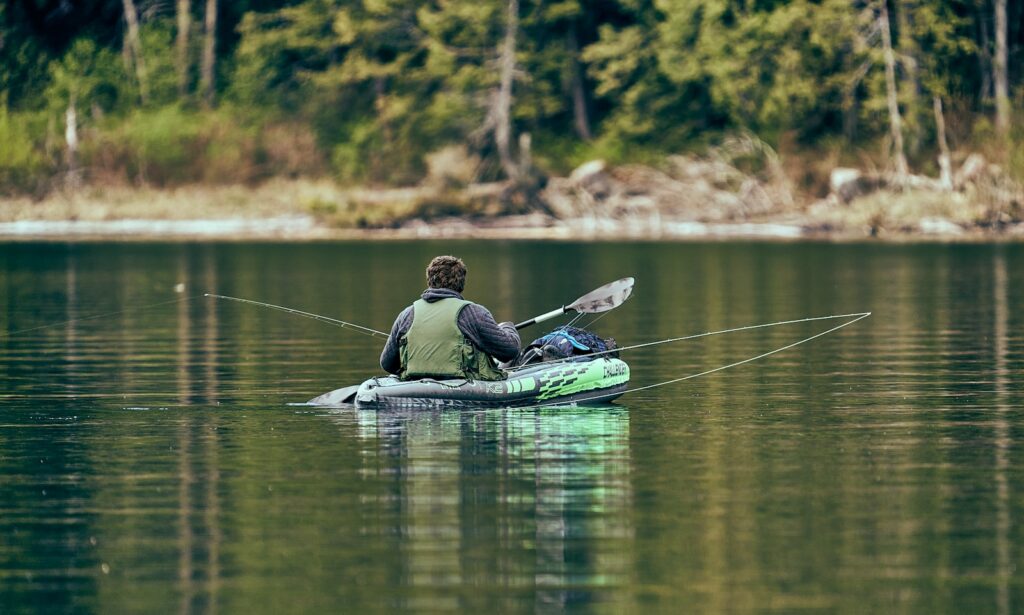
Before mastering casting techniques, it’s crucial to understand what makes a kayak stable or unstable on the water. Kayaks operate with two types of stability: primary stability (how stable the kayak feels when sitting flat on calm water) and secondary stability (how the kayak responds when tilted to its side). Fishing kayaks typically feature a wider hull design that prioritizes primary stability, making them less likely to tip during normal fishing activities. The center of gravity—the point where all your weight is effectively concentrated—plays a pivotal role in stability management.
When you’re seated in your kayak, your upper body represents the highest point of this center of gravity, which means any dramatic movement above the waterline (like a powerful cast) can quickly translate into instability below it. Understanding these basic principles will help you visualize what’s happening during potentially destabilizing fishing maneuvers.
Selecting a Stable Fishing Kayak
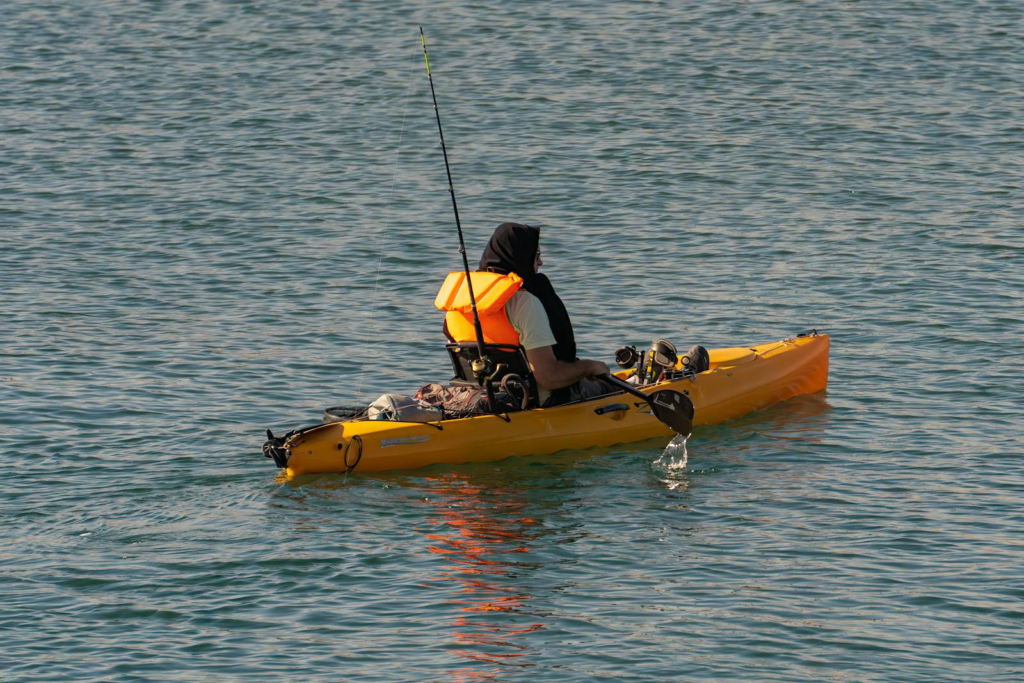
Your choice of kayak dramatically impacts your casting stability before you even hit the water. Fishing-specific kayaks are designed with wider hulls and flatter bottoms that provide excellent primary stability—exactly what you need when standing or casting. Some advanced fishing kayaks incorporate pontoon-style hulls or outriggers that further enhance stability. When selecting a kayak, consider not just the width but also the weight capacity, as exceeding this limit dramatically reduces stability. The seating position also matters significantly—kayaks with slightly recessed seats lower your center of gravity and improve stability during casting.
If you’re primarily focused on fishing rather than touring or recreational paddling, prioritize stability features over speed and tracking performance, as a stable platform will ultimately yield more productive and enjoyable fishing experiences.
Proper Seating Position for Maximum Stability

How you position yourself within the kayak creates the foundation for stable casting. Start by adjusting your seat to the most balanced position, usually centered between the bow and stern. Your legs should be slightly bent with feet firmly pressed against the footrests or foot braces, creating three solid points of contact with the kayak (your buttocks and both feet). This tripod-like positioning helps you maintain control during the casting motion. Keep your lower body relatively still while casting, allowing your torso to rotate naturally above the waist. If your kayak features an adjustable seat height, consider lowering it when conditions are choppy or when you need maximum stability.
Some anglers mistakenly sit with legs extended loosely, which eliminates crucial points of contact and significantly reduces their ability to counter-balance during casting movements.
Adapting Your Casting Technique

Traditional shore-based casting techniques require significant modification when applied to kayak fishing. Instead of using your entire body in the cast, focus on using predominantly your upper body while keeping your lower half stable. Reduce the amplitude of your casting arc, opting for shorter, more controlled movements rather than dramatic back casts that can shift your weight dramatically. Side-arm casting techniques often work better from a kayak, as they maintain your center of gravity more effectively than overhead casts. Practice casting with your rod positioned on the opposite side from your paddling hand, which helps distribute weight more evenly across the kayak.
Most importantly, keep your movements smooth and deliberate rather than abrupt and powerful—finesse typically proves more effective than force when casting from a kayak.
Using Your Paddle as a Stabilizer

Your paddle isn’t just for propulsion—it’s also an incredibly effective stability tool during casting. Before making a cast, position your paddle across your lap or across the kayak in front of you with one blade resting on the water’s surface. This technique, known as a paddle brace, provides an outrigger-like effect that can dramatically increase stability during casting. For even greater stability, some anglers employ a technique called the paddle float, where they extend their paddle perpendicular to the kayak with one blade flat on the water surface before beginning their cast.
More advanced paddlers might use a sculling brace, where you make small back-and-forth movements with the blade flat on the water surface, providing dynamic stability throughout your casting motion. Remember that wet paddle blades provide better surface tension against the water, offering improved stabilization compared to dry blades.
Mastering the Standing Cast
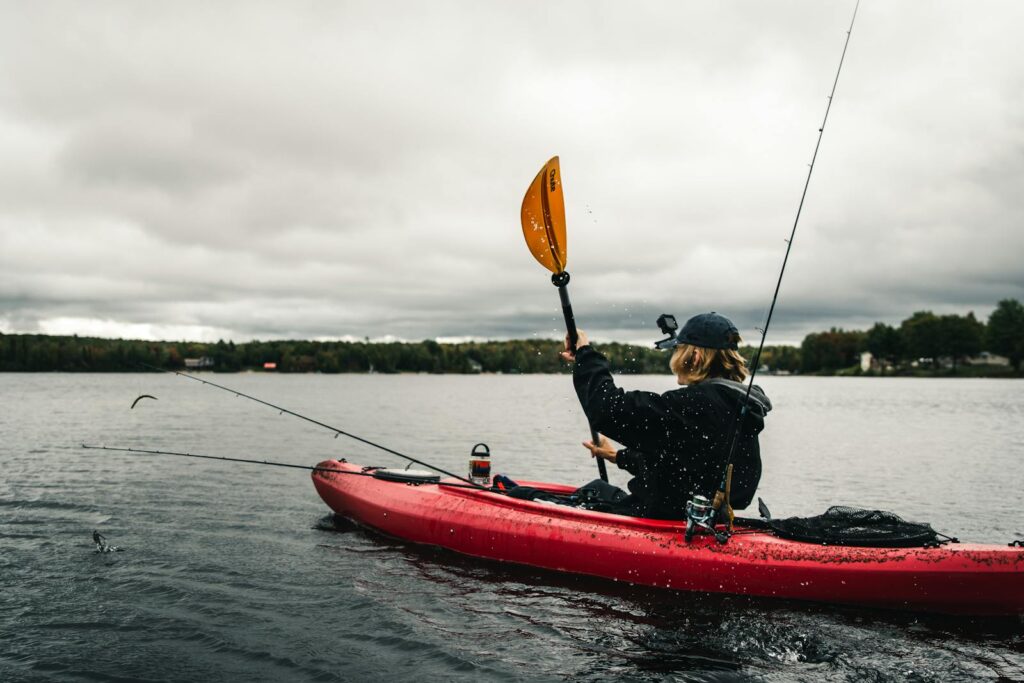
Standing casts from a kayak offer superior visibility and casting distance, but require special attention to balance. Before attempting standing casts, ensure your kayak is specifically designed to support standing positions, as many recreational kayaks lack the necessary stability. Start by practicing standing in calm, shallow water where consequences of falling are minimal. When standing, position your feet at shoulder width along the kayak’s centerline, keeping your knees slightly bent to lower your center of gravity and absorb any kayak movement. Many fishing kayaks feature dedicated standing platforms with non-slip padding that helps secure your footing.
The key to successful standing casts lies in maintaining what paddlers call “soft knees”—a slightly flexed knee position that allows you to adjust to the kayak’s natural movement rather than fighting against it.
Strategic Equipment Placement
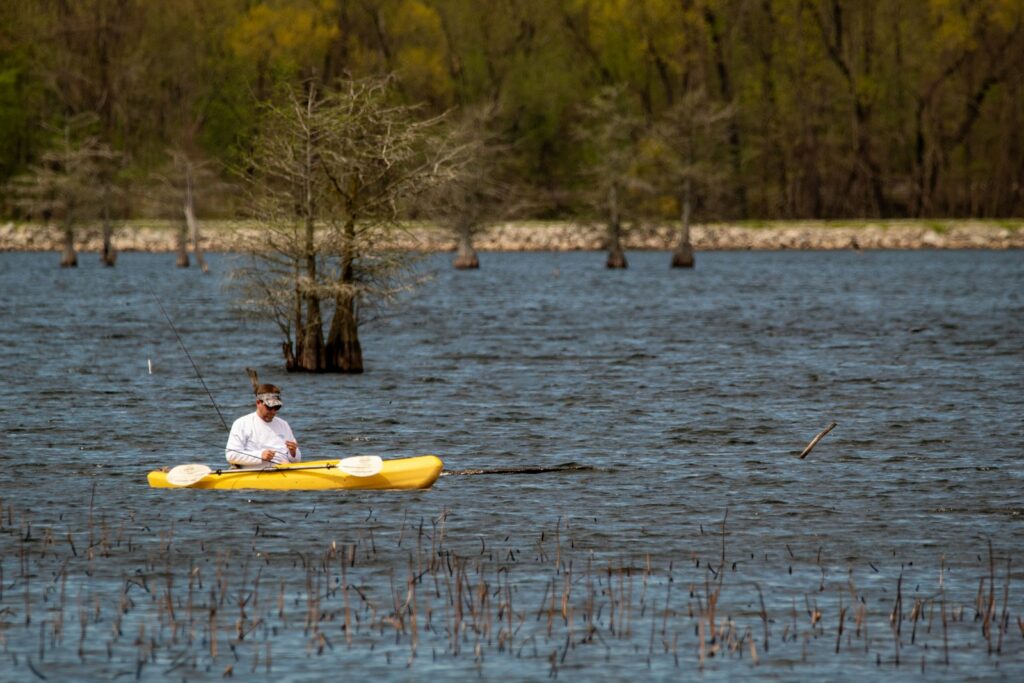
How you distribute weight throughout your kayak dramatically affects stability during casting. Position heavier items like tackle boxes, coolers, and fishing crates as low as possible in the kayak, preferably below the waterline. Distribute weight evenly between the bow and stern to prevent the kayak from becoming “end-heavy,” which creates instability during rotational casting movements. Keep frequently used items within easy reach to avoid having to stretch or lean, which can upset your balance unexpectedly. Many experienced kayak anglers use bungee cords or dedicated kayak attachment systems to secure gear, preventing items from shifting during casting or when navigating choppy water.
Consider installing rod holders in positions that allow for quick access without requiring dramatic reaches or twists that could compromise stability.
Reading and Positioning in Water Conditions
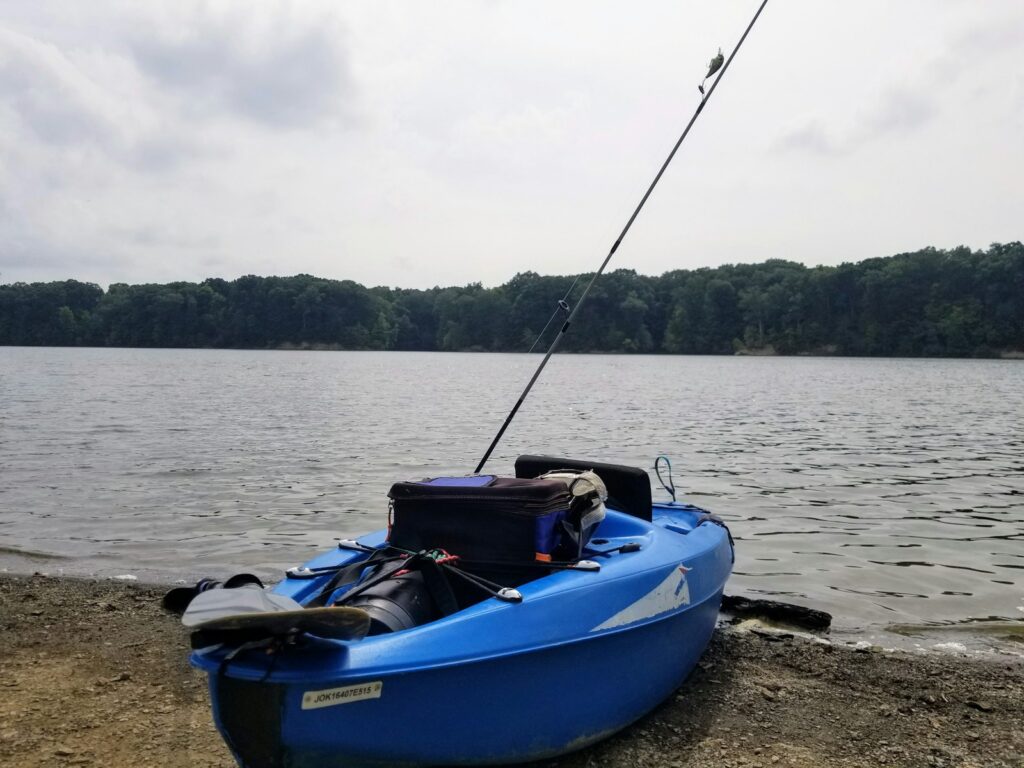
Water conditions significantly impact casting stability, requiring strategic positioning of your kayak. In windy conditions, position your kayak perpendicular to the wind when casting, which provides greater lateral stability than facing into or away from the wind. When fishing in current, angle your kayak slightly upstream at roughly 45 degrees, which helps maintain position while requiring minimal adjustment during casting. In wave conditions, time your casts during the troughs between waves rather than on the crests, when your kayak is at its most stable position. Learning to “read” water by identifying wind patterns, current seams, and wave sets allows you to anticipate stability challenges before they affect your cast.
The most successful kayak anglers develop an almost intuitive sense of how their kayak will respond to different water conditions, allowing them to make preemptive adjustments to maintain casting stability.
Utilizing Kayak Anchoring Systems
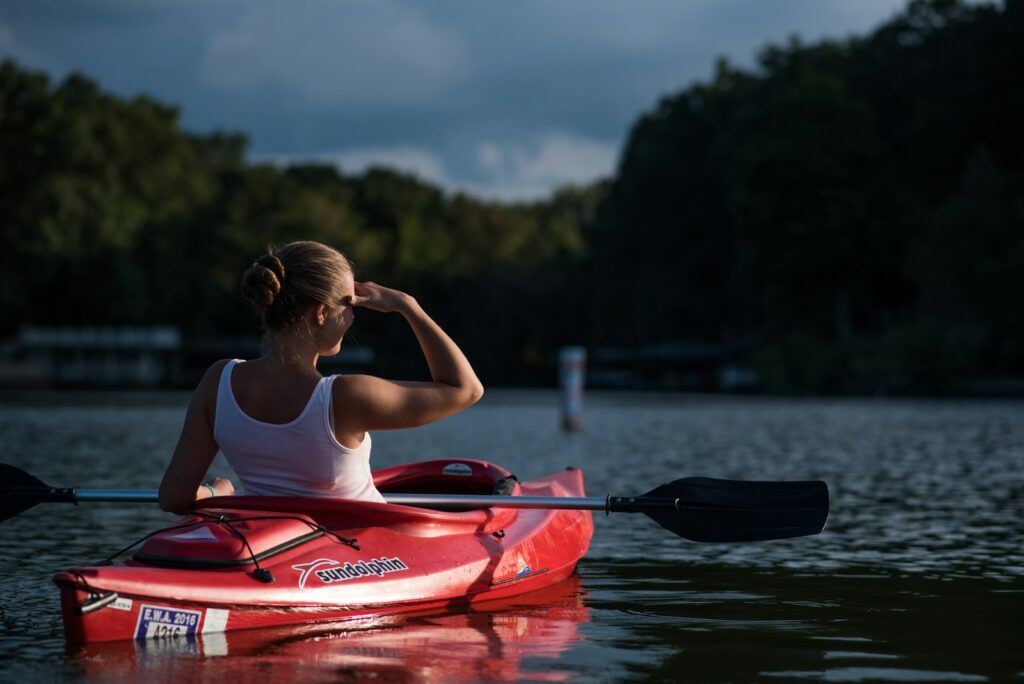
Anchoring your kayak creates a stable platform that dramatically improves casting accuracy and reduces the risk of tipping. Modern kayak anchor systems include traditional anchors, stake-out poles for shallow water, and anchor trolleys that allow you to adjust your position relative to current and wind without moving the anchor itself. When anchoring, always deploy your anchor from the bow or stern rather than the side to prevent the kayak from being pulled sideways by current or wind, which creates dangerous instability.
Many experienced anglers use drift anchors or drag chains in moving water, which slow the kayak’s drift without fully stopping it, allowing for controlled movement while maintaining stability during casting. In situations where anchoring isn’t practical, consider using brush hooks or similar devices that temporarily secure your kayak to available structure, providing momentary stability for precision casts.
Balance-Enhancing Accessories
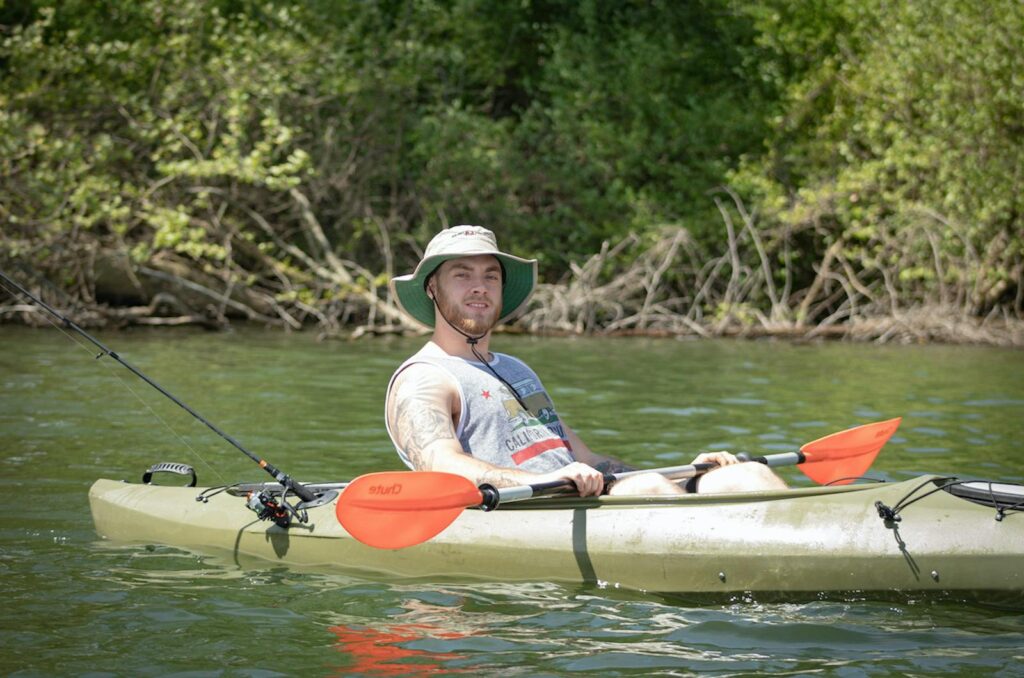
The kayak fishing industry offers numerous accessories specifically designed to enhance stability during casting. Outriggers or stabilizers attach to the sides of your kayak, dramatically increasing lateral stability at the cost of some maneuverability. Inflatable pontoons provide similar benefits with the advantage of being deflatable when not needed. Standing assistance bars give you something to hold while transitioning from seated to standing positions, often the most precarious moment in kayak fishing. Many anglers install non-slip deck padding that improves foot grip during standing casts and reduces fatigue during long fishing sessions.
For those seeking maximum stability, some companies manufacture stand-up bars that extend across the width of the kayak, providing a secure handhold during standing casts.
Practicing Recovery Techniques
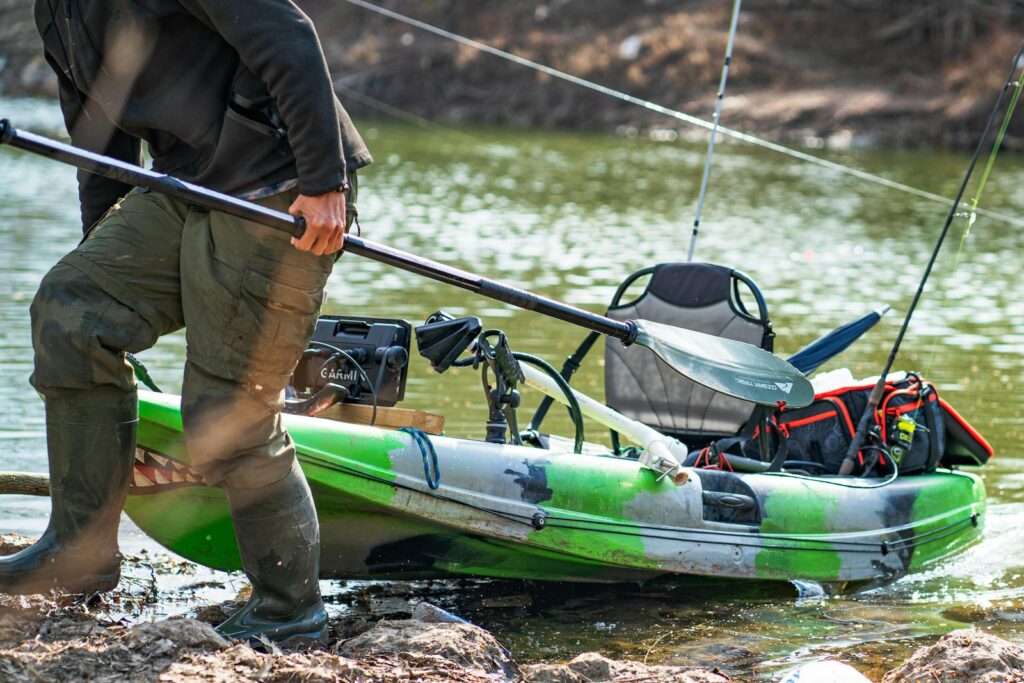
Even with perfect technique, there’s always a possibility of losing balance while casting from a kayak. Knowing how to recover from near-capsizes can prevent a momentary instability from becoming a full immersion. Practice the “low brace” recovery technique, where you slap the back face of your paddle blade against the water’s surface while keeping your arms low and elbows up, creating an immediate stabilizing force. The “high brace” uses the power face of the paddle with arms positioned higher, providing even stronger support but requiring more skill to execute properly.
Regularly practice intentional “wet exits” in controlled environments so you know exactly how to safely exit your kayak if you do capsize. Consider taking a kayak safety course that teaches self-rescue techniques like the scramble recovery or assisted rescues if you frequently fish with partners.
Weather Awareness and Safety Precautions

Weather conditions dramatically impact kayak stability during casting, making awareness and preparation essential safety components. Always check marine forecasts before heading out, paying particular attention to wind speed predictions, as winds above 10-15 mph can create challenging casting conditions for most kayakers. Understand that water and air temperatures together determine appropriate safety gear—cold water requires more conservative approaches to casting positions and techniques, as the consequences of capsizing become more serious. Always wear a properly fitted Personal Flotation Device (PFD) designed for anglers, with high-back support that accommodates kayak seats.
Consider using a kayak fishing-specific PFD with multiple pockets that keep essential gear accessible without requiring destabilizing movements. When conditions deteriorate unexpectedly, prioritize safe paddling positions over fishing activity until you reach calmer waters or shorelines.
Progressive Skill Development
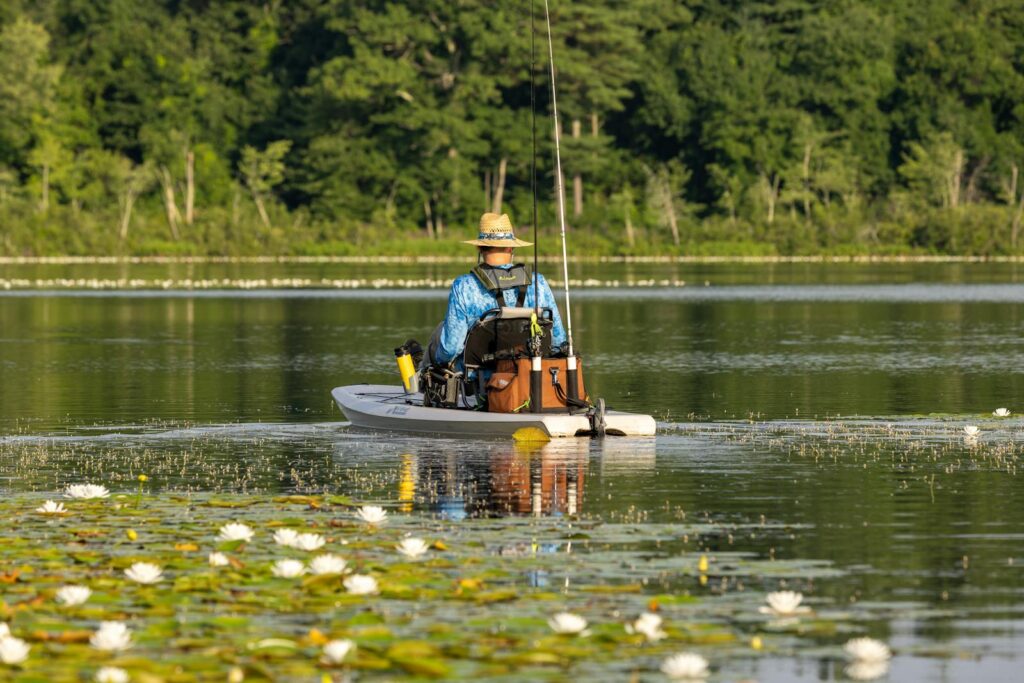
Developing stable casting techniques from a kayak requires progressive skill building rather than immediately attempting advanced methods. Begin in completely calm, shallow water where falling consequences are minimal, focusing first on basic seated casting techniques before attempting more advanced methods. Gradually introduce more challenging conditions—light winds, gentle current, or minor chop—as your confidence and skill increase. Join kayak fishing clubs or online communities where you can learn from experienced anglers and possibly find mentors willing to demonstrate techniques in person.
Consider filming yourself casting from your kayak, which provides valuable visual feedback on body positioning and movement patterns that may be compromising your stability. Remember that even professional kayak anglers regularly practice foundational skills, recognizing that consistent reinforcement of proper technique creates the muscle memory necessary for instinctive stability management during active fishing scenarios.
Conclusion

Mastering the art of balanced casting from a kayak represents the perfect fusion of paddling and fishing skills. While it certainly requires practice and attention to technique, the rewards are substantial—accessing productive fishing spots unreachable by shore anglers or larger boats, experiencing an intimate connection with the water, and enjoying the unique satisfaction that comes from successfully landing fish from such a specialized platform. By understanding kayak stability principles, adapting your casting technique, utilizing appropriate equipment, and progressively building your skills, you’ll transform potentially precarious fishing moments into confident, productive angling experiences.
Remember that even experienced kayak anglers occasionally take unexpected swims—the key is learning from each experience and continuously refining your approach to this rewarding form of fishing.


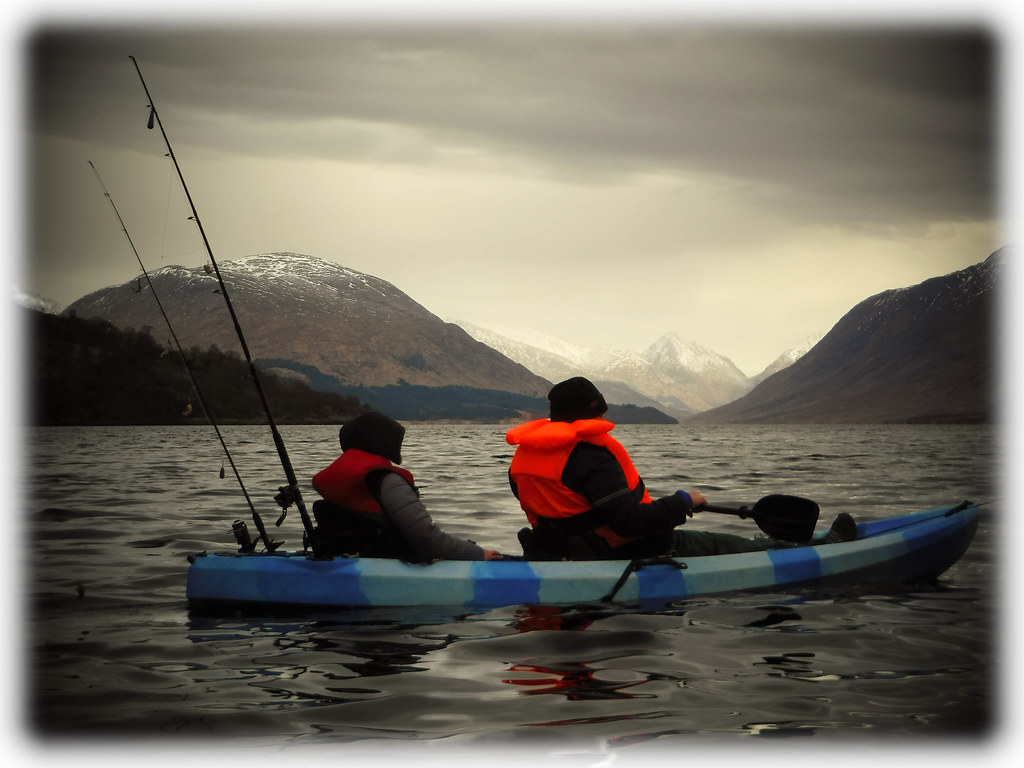











Post Comment